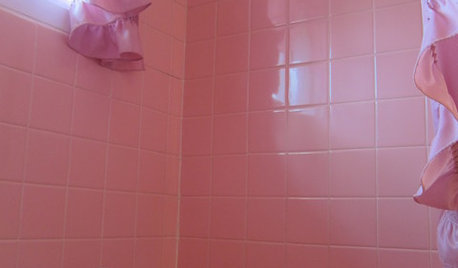Are my fermenting green beans ok?
NilaJones
10 years ago
Related Stories

EDIBLE GARDENS7 Edible, Pretty Wonders of the Plant World
It's OK to like them just for their looks, but these flowers, trees and greens have a tasty side too
Full Story
DECORATING GUIDESFrom Queasy Colors to Killer Tables: Your Worst Decorating Mistakes
Houzzers spill the beans about buying blunders, painting problems and DIY disasters
Full Story
HEALTHY HOME6 Tips From a Nearly Zero-Waste Home
Lower your trash output and increase your quality of life with these ideas from a mom who did it to the max
Full Story
MOST POPULARHow to Start a Cool-Season Vegetable Garden
Late summer and late winter are good times to plan and plant cool-season crops like salad greens, spinach, beets, carrots and peas
Full Story
GREEN BUILDINGHow to Recycle Your Kitchen
Instead of adding to the junk pile — and paying landfill fees — get rid of old appliances, cabinets and countertops the ecofriendly way
Full Story
HOLIDAYS10 Ways to Set the Table for an Amazing Easter
Go Over the Top or Sleek and Contemporary for Your Spring Dining Decorations
Full Story
FEEL-GOOD HOME12 Very Useful Things I've Learned From Designers
These simple ideas can make life at home more efficient and enjoyable
Full Story
HOUZZ TOURSHouzz Tour: From Overgrown Weeds to Picturesque Farmhouse Expanse
This once-neglected 100-acre South Carolina site now features a lake, a wood-filled farmhouse and a far-reaching view
Full Story
KITCHEN DESIGNKitchen of the Week: Modern and Rustic Meet in the Woods of Quebec
Tall windows open this handcrafted wood-and-white loft kitchen to the beautiful outdoors
Full Story
BATHROOM DESIGNTickled Pink in the Bathroom
We asked you to show us your vintage pastel bathrooms — and you responded with a tsunami of photos and comments
Full Story





digdirt2
NilaJonesOriginal Author
Related Professionals
Allen Landscape Architects & Landscape Designers · Carson Landscape Architects & Landscape Designers · Elgin Landscape Contractors · Frisco Landscape Contractors · Damascus Landscape Contractors · Lemoore Landscape Contractors · Metairie Landscape Contractors · Saint Paul Landscape Contractors · Santa Maria Landscape Contractors · Fort Myers Roofing & Gutters · Wilmington Roofing & Gutters · Norwood Roofing & Gutters · Wilmette Roofing & Gutters · Dearborn Driveway Installation & Maintenance · Easton Driveway Installation & MaintenanceNilaJonesOriginal Author
readinglady
NilaJonesOriginal Author
readinglady
NilaJonesOriginal Author
digdirt2
NilaJonesOriginal Author
digdirt2
NilaJonesOriginal Author
readinglady
sidhartha0209
digdirt2
NilaJonesOriginal Author
digdirt2
NilaJonesOriginal Author
readinglady
NilaJonesOriginal Author
sidhartha0209
sidhartha0209
digdirt2
sidhartha0209
digdirt2
sidhartha0209